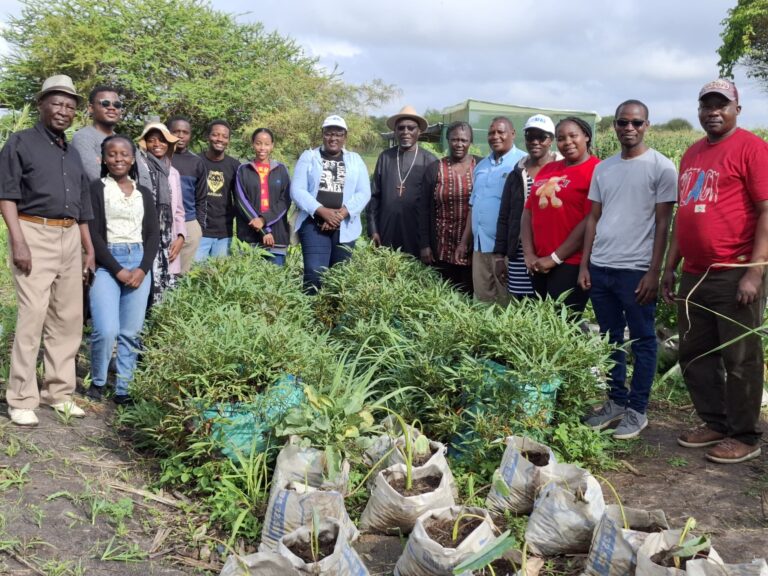
Disclaimer: All pictures for this blog are from the AFAS 2nd Cohort Students of University of Nairobi
On 22nd November 2024, AFAS second cohort students from the University of Nairobi had an excursion to Yatta Farm, run under the umbrella of Christian Impact Mission (CIM) – a faith-based organisation – to learn about the practical aspects of nature-based solutions (NbS) and science-policy-practice interfaces (SPPIs) implemented within the agriculture sector in Kenya’s savannas. The excursion inspired us to explore how a change in mindset and adopting innovative agricultural practices can improve food security and build resilience in vulnerable communities across Africa. In this blog, we share the insights we gained from Yatta Farm and highlight the lessons it offers for transforming lives in drylands through practical and sustainable solutions.
The Yatta Farm is located in Machakos County and sits on 12 acres of land. A lot of crops are planted in the farm, including onions, passion, maize, chillies, potatoes, tomatoes, avocado, herbs, cauliflower and cabbage. The area is in an arid and semi-arid region. The name Yatta is native to Eastern Kenya and translates to “dryland” or “wasteland”. It is a famine-prone area which experiences only one major rainy season all year round. The local communities therefore face several challenges including water scarcity, food insecurity as well as poverty. These harsh living conditions were especially exacerbated between the years 2006 and 2011 when the region experienced severe drought that hit Central and East Africa (Haile et al., 2019). According to a study by Nyambane (2020), Yatta experiences more than three droughts in every ten years. For example, between 2000 and 2010, drought was experienced in 2007, 2008, and 2009 and between 2010 and 2018, drought was experienced in 2014, 2015, and 2016. This limits the ability of the region to practice agriculture. Rainfed agriculture is crucial for food production in sub-Saharan Africa (SSA), accounting for nearly 90% of staple food and feed production (Cooper & Coe, 2011). However, it is beset by challenges, including rainfall variability, climate change, and under-investment. These factors contribute to low productivity, food insecurity, and increased vulnerability to climatic shocks (Shimeles et al., 2018). The idea of setting up Yatta Farm was inspired by Dr. Bishop Masika with the thought of poverty eradication in the region and providing food for local communities. Setting up the farm began in 2000 by the Christian Impact Mission, and the building and development process took place over the next decade till 2011. The key focus areas of this initiative include community empowerment, land reclamation, land management, rehabilitation and afforestation.
In order to reclaim the area and achieve transformation, Bishop Masika, the project founder, began an Anthropological Assessment (Sarker, 2017) during the project inception. This is a people-centric approach that’s different from the popular Needs Assessment approach that is normally adopted by most NGOs and government agencies when developing vulnerable areas. While the conventional needs assessment approach identifies gaps in resources and infrastructure, anthropological assessments delve deeper into understanding community values, beliefs, and social structures (Pillai, 2022). This depth of understanding allows interventions to align with local customs, thus enhancing their relevance and effectiveness. Globally, projects that overlook cultural contexts often fail to gain traction, whereas those that are community-driven, like those in Yatta, create adaptable and sustainable outcomes. Prioritizing people over infrastructure ensures that development initiatives are culturally relevant, socially accepted, and community-driven.
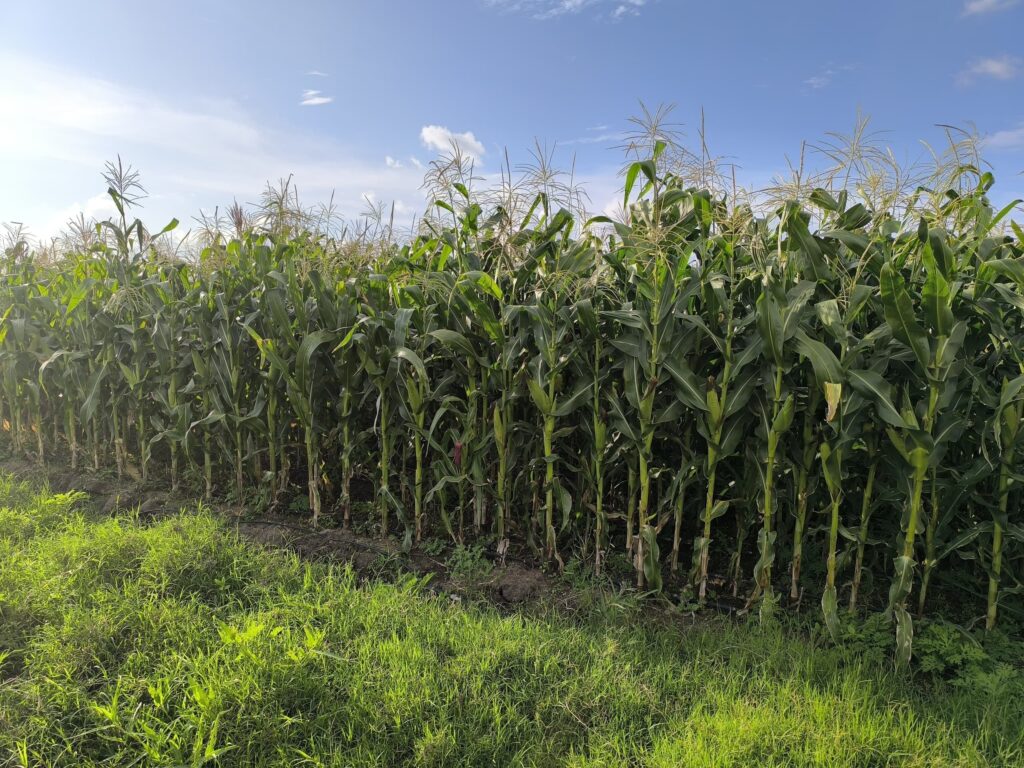
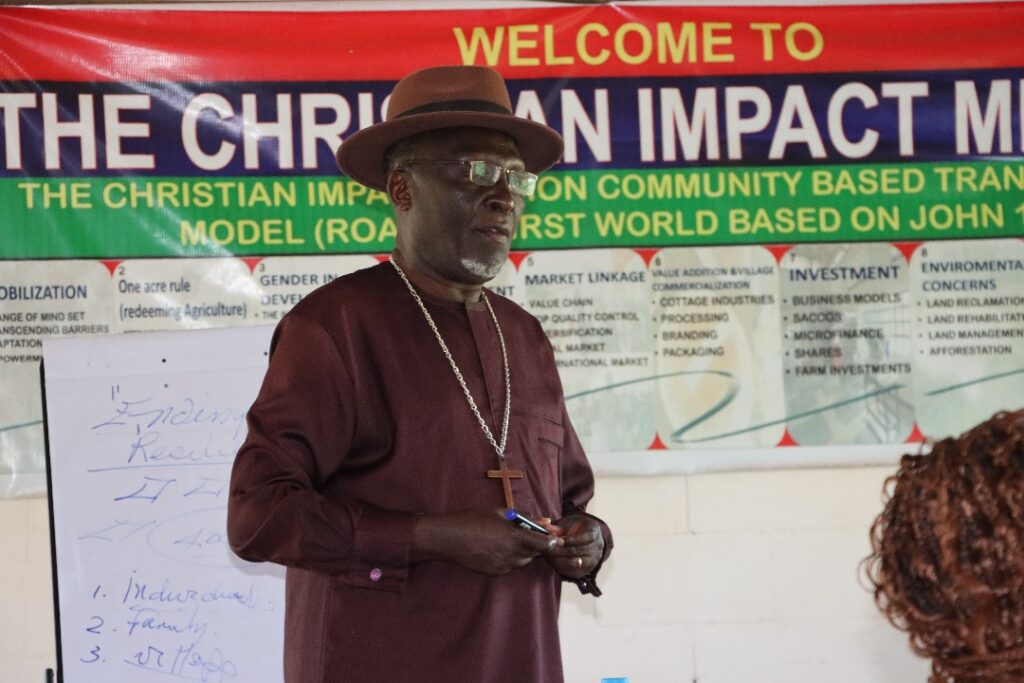
The community and livelihoods transformation in Yatta enabled by the Farm is rooted in mindset change. This involves shifting one’s beliefs, attitudes and behaviour in order to tackle challenges differently. For example, the local community believed that agriculture can only be supported by rains. However, dependency on rain is limiting the potential of agriculture in a ‘box’. Bishop Masika emphasized that “agriculture needs more brain than rain.” This translates to shifting local community focus from sole dependence on natural elements such as rain, to self-reliance and independence. One way they achieved this is by empowering the community to dig water pans that reserve water even in dry spells to support irrigation in their farmlands. In the year 2000, the community mobilized and dug one of the largest water pans that supports irrigation on a 6-acre size plot within the Farm. Unlike other smaller water pans dug in subsequent years, this water pan has never dried up till date. Eventually, the community was convinced that rain-fed agriculture is not the only way to farm, hence wide acceptance and uptake of the irrigation agriculture system.
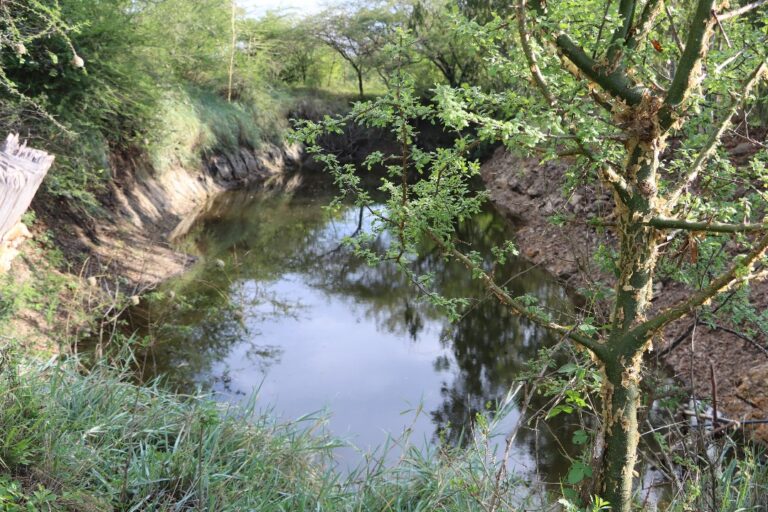
Another major problem that plagued Yatta community is the dependency syndrome. According to Bishop Masika, the community heavily depended on external aid from donors as a livelihood option just as much as they depended on rain for agriculture. The community was characterised by a defeatist mindset and manifested their struggles through Swahili phrases of exclusion and limitation such as Siwezi which means “I can’t”, Sina which means “I don’t have”, Sijui meaning “I don’t know”, and Sitaki which means “I don’t want to be included”. The implementation of Yatta Farm dealt with this mindset by cultivating independence through provision of livelihoods. The local community was, therefore, empowered to provide for their own basic needs.
This principle is inspired by a biblical analogy of the Moses story and it means using what you have to get what you don’t have. Initially while setting up the farm, they faced challenges such as scarcity of proper tools to dig up the water pans. However, they used whatever tools were available to them during the time. Instead of waiting on external resources, they took initiative and used local labour and indigenous knowledge to set up and run the farm.
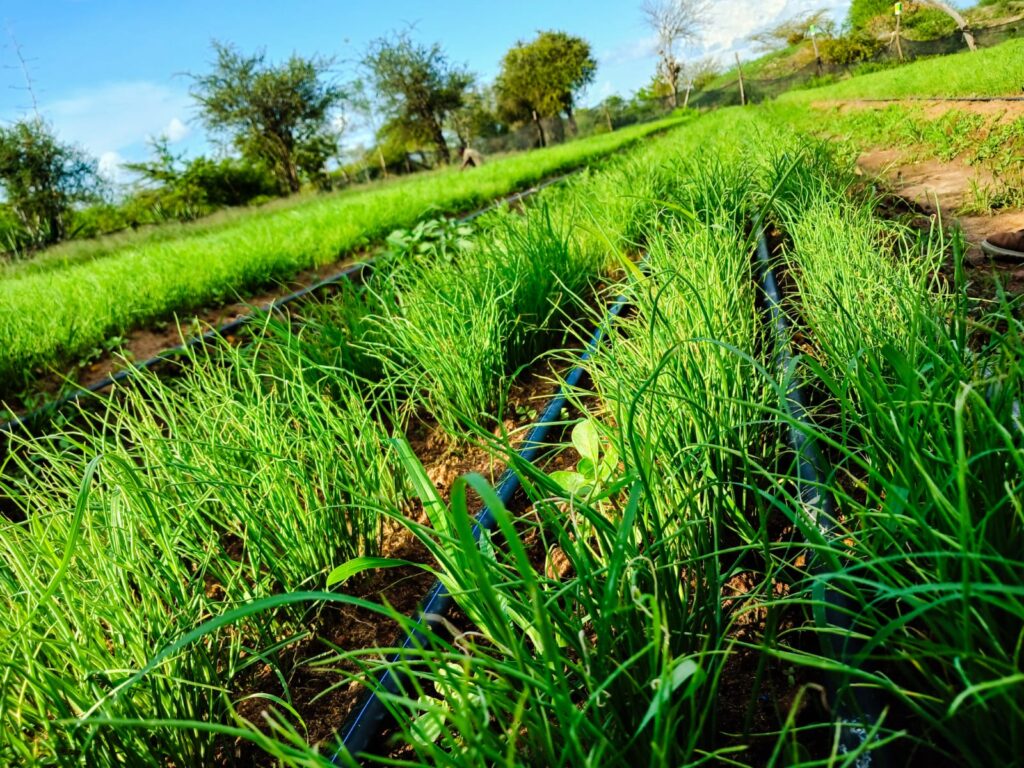
The one-acre rule devised by Bishop Dr Masika of Yatta Farm focuses on optimizing small landholdings to achieve food security, nutrition, wealth creation, and employment. By adopting market-based and calendar agriculture, farmers grow high-value crops like onions and tomatoes year-round, ensuring a steady income and reducing food insecurity.
Market-based agriculture, which prioritizes identifying markets before production, ensures that farm produce is often pre-sold or sold immediately, eliminating the need for farmers to search for buyers. Additionally, off-season farming provides a competitive advantage, as harvested products during these periods are scarce, higher in quality, and command premium prices. This is made possible in Yatta through the use of water pans, which allow for consistent irrigation regardless of seasonal rainfall. This approach holds a significant relevance particularly in developing countries dominated by small-scale farming. The approach also empowers smallholder farmers, contributing to poverty alleviation and sustainable development by enhancing food security and creating reliable income opportunities.
Nature-based Solutions (NbS) provide scalable and cost-effective strategies for addressing socio-environmental challenges by harnessing ecosystems and natural processes (Davies et al., 2021). In Yatta, localized, low-cost interventions such as rainwater harvesting through water pans and the use of organic fertilizers have demonstrated their transformative potential for landscapes and livelihoods. These accessible technologies, which communities can implement and maintain, enhance ecosystem services like soil fertility and water retention without depleting natural resources. Globally, similar approaches such as Zai Pits in Burkina Faso have significantly improved agricultural productivity and resilience, illustrating their replicability across diverse environments (Ahmed & Klaasse, 2020).
One of Yatta Farm’s most significant challenges was water scarcity, which was addressed through a combination of innovative traditional water harvesting methods and later improved by modern technology. Rainwater harvesting methods offer opportunities to improve water access in arid and semi-arid regions (Dwivedi et al., 2021). According to Bishop Masika, Yatta Farm has implemented a successful community transformation program to ensure water access in the area which has enabled the community overcome water and food insecurity and dependency syndrome. This program is also being scaled to other parts of the country like Turkana, Nyanza and Baringo.
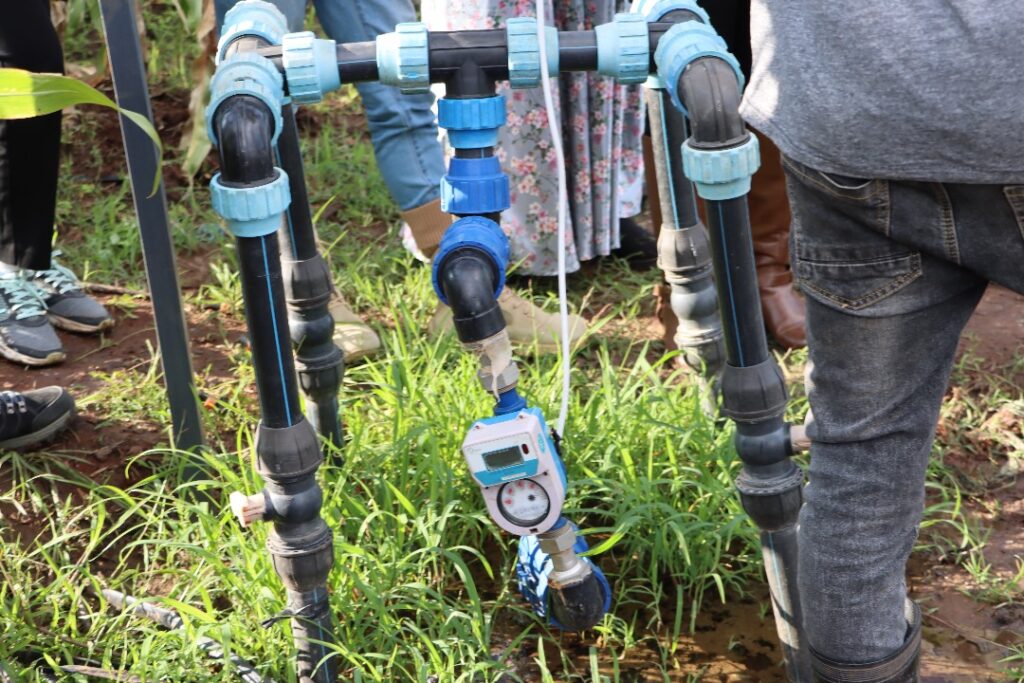
Wells and water pans were dug, and IoT-enabled drip irrigation systems were introduced to ensure efficient water use. This transformed the landscape by supporting tree growth and high-value crops like tomatoes, onions, and chilies which not only improved food security but also provided economic opportunities. Digging of water pans was also promoted to help in soil water management.
Indigenous techniques like sand-charcoal purification made water safe for human use, while crop storage innovations such as charcoal coolers and mould-resistant platforms are utilised to avoid post-harvest losses. The farm has structures that are used to handle produce post-harvest; for instance, the charcoal coolers and dark rooms are used for curing onions. These structures are able to hold the produce for up to three months.
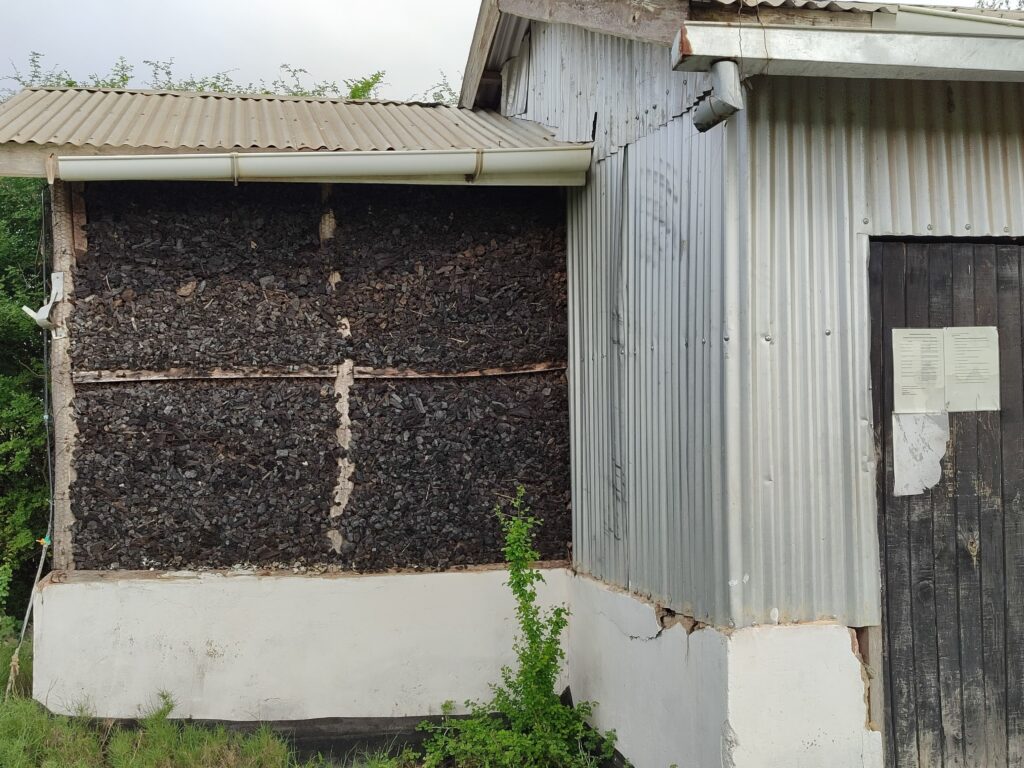
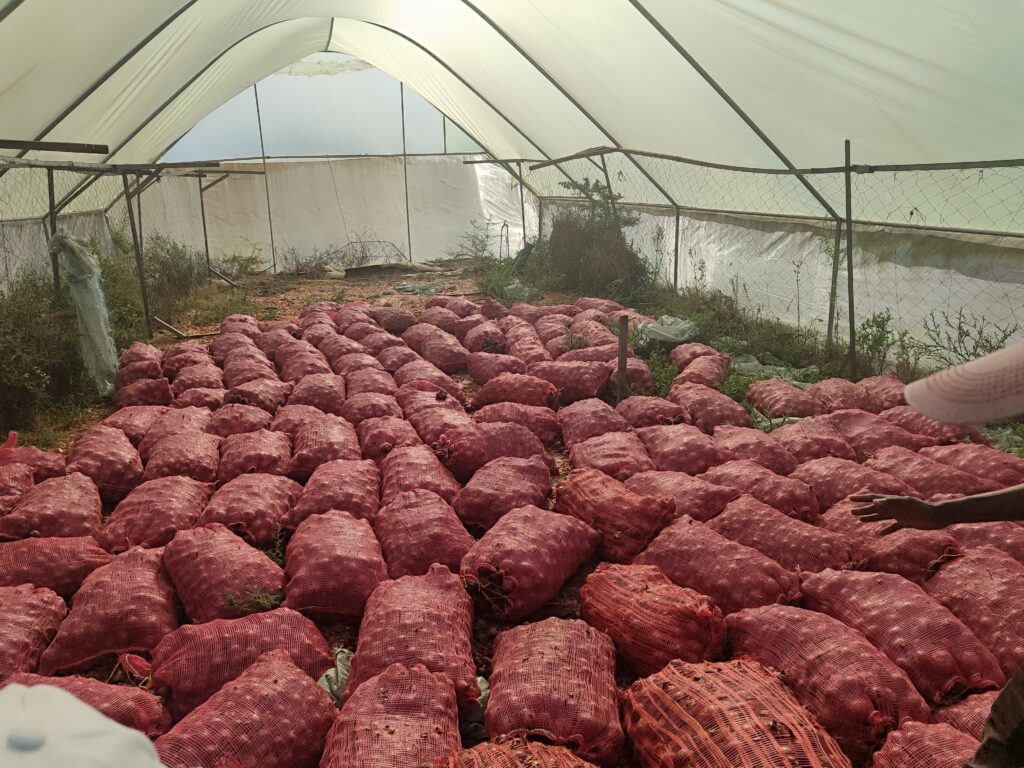
Yatta Farm also exemplifies sustainable land management. Practices like crop rotation are embraced. The principles of circularity are also adhered to as composting of post-harvest waste such as maize stalks are done to make organic manure thus ensuring no waste. Other sustainable land management practices include vermiculture for organic fertilizers, integration of diverse crops like maize, pawpaw, potatoes, onions, and others, which all balance productivity with ecological health.
The water pans have dam liners for efficient water management. The liners minimise seepage and reduce wastage of the scarce resource. Eucalyptus trees are planted around the water pan to provide shade and reduce the rate of evaporation. While eucalyptus is known for its high groundwater consumption, Chris (one of the farm managers) explained that it has not adversely impacted the water pan due to its placement along the edges, where it is accompanied by several shrubs. Automated systems like IoT-enabled drip irrigation ensure efficient resource utilization, enabling year-round farming.
Our excursion to Yatta Farm was a profound reminder that solving global challenges like climate change, food insecurity, and water scarcity requires more than technological fixes. It demands a transformative mindset shift, community-driven innovation, and collaborative governance that integrates NbS with local knowledge and resilience-building strategies. Yatta Farm, through its remarkable transition from a barren landscape to a flourishing agricultural hub, reiterates the power of determination, resourcefulness, and the potential of sustainable practices to tackle even the harshest environmental and socio-economic conditions.
As aspiring future climate change adaptation professionals, the lessons from Yatta Farm resonate deeply with us. From implementing water-harvesting techniques and climate-smart farming to addressing dependency mindsets and fostering self-reliance, the farm exemplifies how local solutions can drive global impact. Inspired by Bishop Masika’s words, “Unless we deal with the mindset issue, all we do amounts to nothing,” we are motivated to replicate and adapt these approaches in our own research and advocacy. The Farm’s success story reinforces the importance of empowering communities, leveraging indigenous knowledge, and integrating innovation to build resilient, sustainable futures across Africa and beyond.
1. Ahmed, M., & Klaasse, A. (2020). Scaling land-based mitigation solutions in Burkina Faso. In Landmarc 2020. Retrieved from https://www.landmarc2020.eu/s/Burkina-Faso.pdf
2. Cooper, P. J. M., & Coe, R. (2011). Assessing and addressing climate-induced risk in sub-Saharan rainfed agriculture: Foreword to a special issue of Experimental Agriculture. Experimental Agriculture, 47(2), 179–184. https://doi.org/10.1017/S0014479711000019
3. Davies, C., Chen, W. Y., Sanesi, G., & Lafortezza, R. (2021). The European Union roadmap for implementing nature-based solutions: A review. Environmental Science & Policy, 121, 49–67. https://doi.org/10.1016/j.envsci.2021.01.089
4. Dwivedi, Y. K., Hughes, L., Ismagilova, E., Aarts, G., Coombs, C., Crick, T., … Williams, M. D. (2021). Artificial intelligence (AI): Multidisciplinary perspectives on emerging challenges, opportunities, and agenda for research, practice, and policy. International Journal of Information Management, 57. https://doi.org/10.1016/j.ijinfomgt.2019.08.002
5. Haile, G. G., Tang, Q., Sun, S., Huang, Z., Zhang, X., & Liu, X. (2019). Droughts in East Africa: Causes, impacts, and resilience. Earth-Science Reviews, 193, 146–161. https://doi.org/10.1016/j.earscirev.2019.04.015
6. Nyambane, S. (2020). The effects of agricultural drought on livelihoods vulnerability in Yatta Sub-County of Machakos County, Kenya [Master’s thesis, University of Nairobi]. University of Nairobi Repository. http://erepository.uonbi.ac.ke/handle/11295/154305
7. Pillai, J. (2022). Cultural mapping: A guide to understanding place, community, and continuity (2nd ed.). Strategic Information and Research Development Centre. https://books.google.com/books?hl=en&lr=&id=GHegEAAAQBAJ
8. Sarker, N. I. (2017). An introduction to agricultural anthropology: Pathway to sustainable agriculture. Journal of Sociology and Anthropology, 1(1), 47–52. https://doi.org/10.12691/jsa-1-1-7
9. Shimeles, A., Verdier-Chouchane, A., & Boly, A. (2018). Introduction: Understanding the challenges of the agricultural sector in sub-Saharan Africa. In Building a resilient and sustainable agriculture in sub-Saharan Africa (pp. 1–12). Springer. https://doi.org/10.1007/978-3-319-76222-7_1
Information about the authors:
Ann Wanjiru Njuguna is an AFAS Scholar of the 2nd master Cohort based at the University of Nairobi in Kenya.
(njugunaa.ann[a]students.uonbi.ac.ke )
Elvis Ogot Shikanda is an AFAS Scholar of the 2nd master Cohort based at the University of Nairobi in Kenya.
(solvis[a]students.uonbi.ac.ke)
Annet Margaret Nabirye is an AFAS Scholar of the 2nd master Cohort based at the University of Nairobi in Kenya.
(annetmargaret[a]students.uonbi.ac.ke)
Thomas Abudu Alhassan is an AFAS Scholar of the 2nd master Cohort based at the University of Nairobi in Kenya.
(alhassan.thomas48[a]students.uonbi.ac.ke)